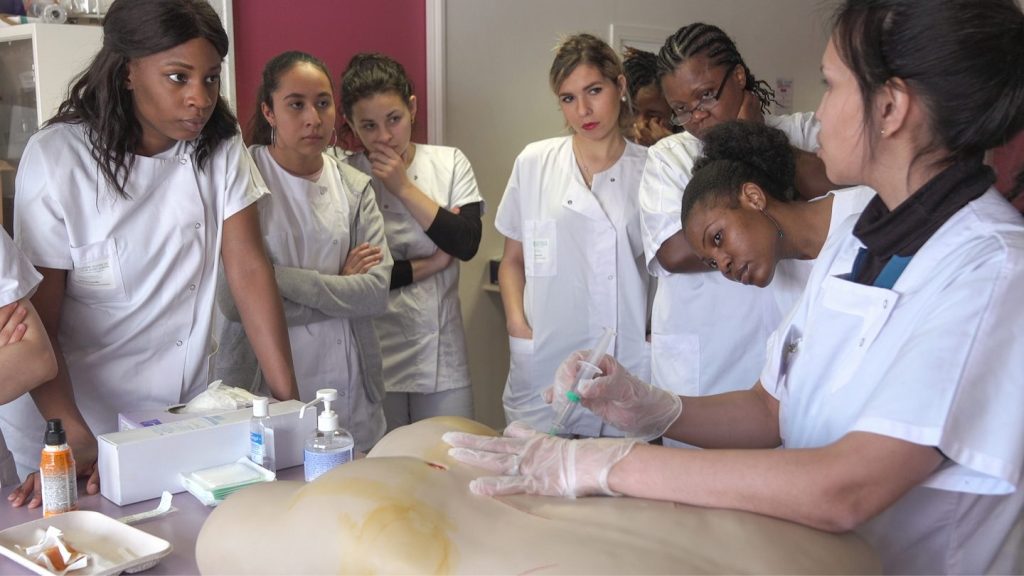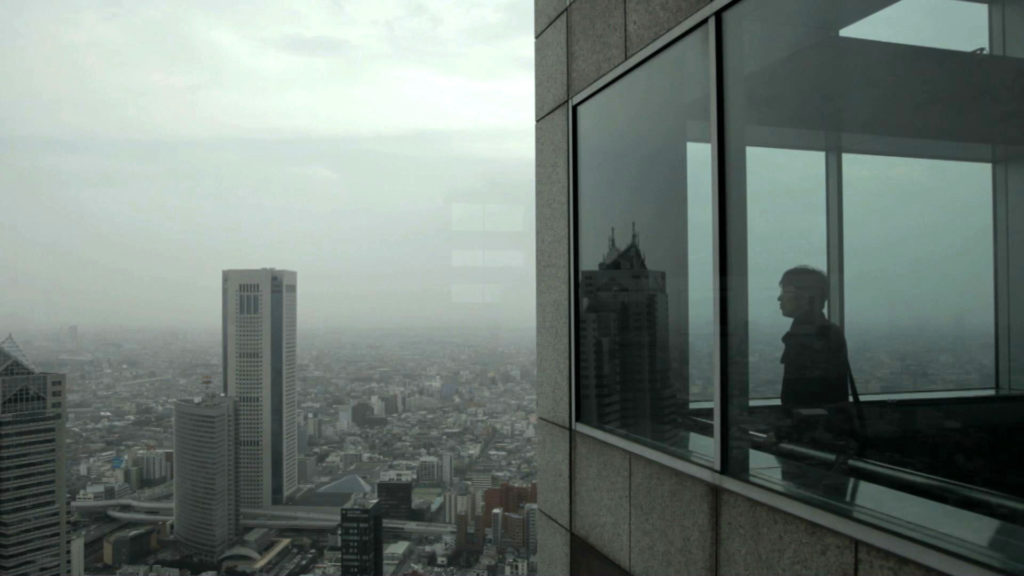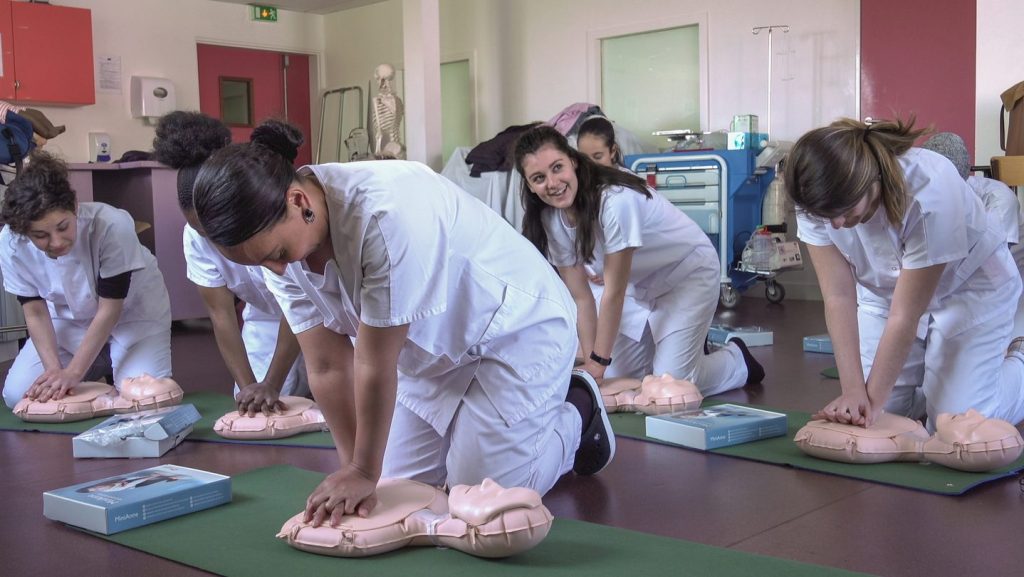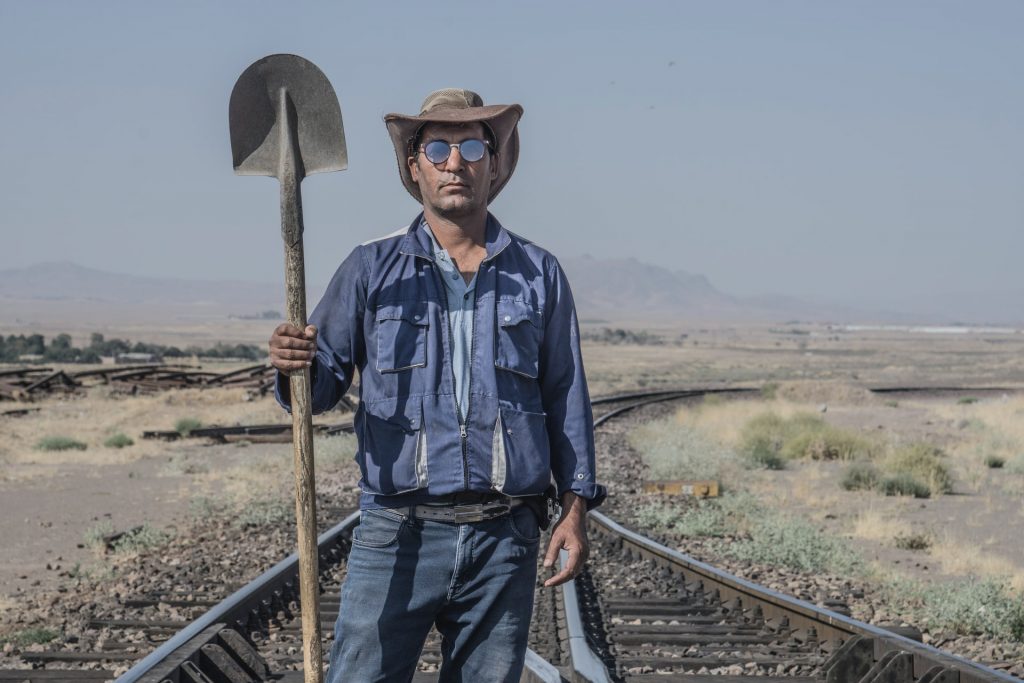Between enlightenment and ‘plugging’. A history of vocational guidance films on nursing
At a film evening on nursing education at the Vienna Film Academy last November, three vocational guidance films from the 1940s, 1980s and 2020s, among others, were jointly scrutinized by nursing professionals, filmmakers and both scholars in film studies and vocational science. Revealing stages of progress and regression as well as fundamental questions concerning vocational training, film and fiction. What does a contemporary nursing education consist of? How much reality is there in vocational guidance films?
Vocational Guidance is a film genre of its own, which in contrast to advertising, has no overt commercial intentions. It does not promote any employer or an educational provider but tries to convey a neutral image of an occupation and enlightens us on the basis of work tasks, qualifications, job requirements, training and social dimensions. In this respect, little has changed in the aim, but pretty much everything has changed in the way it is produced and consumed.
“Faster, shorter, more colorful” is how one could summarize the historic development of vocational guidance films. Axel Stummer’s film “Beruf helfen” (occupation: carer) (AT 1982) was created when it was still customary to last 30min so that there would be enough time for questions from students within the one-hour lesson; presently vocational guidance films have to stand up to competition from three-minute TikTok videos (see, for example, “Gesundheits- und Krankenpflege” (2019) by stay tuned from the Austrian Public Employment Service series of career videos).
In ‘Nursing’ (USA 1942), the didactic setting from the black-and-white era of film saw an authoritative male narrator with a lecturing voice off-screen explaining the profession. In contrast, today’s vocational guidance films exclusively feature qualified and prospective practitioners speaking for themselves. In ‘Beruf helfen’ from the 1980s, both elements are still used, as well as a mix of actors and active nurses. In addition, according to Stummer, there was a requirement to give the film the quality of a feature film. Consequently, there is also a plot of sorts, and even the leisure time behavior of nursing staff and their residence is given an unbelievable amount of space.
Largely unthinkable today, this aspect thus promoted an important additional finding: we get an insight, into the milieu and social environment of caregivers. As a highlight, director Stummer also built in a few suspense elements à la ‘The Kingdom’ (1994)*, thus strengthening the feature film character. “Everything was predetermined down to the smallest detail and I wasn’t allowed to change anything in the script, but I took this artistic license,” Stummer remarks mischievously during the film discussion. Stummer was still a student at the Film Academy at the time, and was clearly delighted to see the film again after 40 years.
But how much fiction is there in vocational guidance films, then and now? In current films from the Austrian PES on nursing, for instance, more male nurses than female nurses have their say, surprisingly. The attempt to attract men to the profession is obvious and legitimate, however, the fact that the proportion of men in nursing in Austria is below 20 percent is conspicuously concealed. In this respect, people used to be more accurate: the footage from ‘Nursing’ (1942) shows only women (note: the training was segregated according to gender). Thus, a certain advertising character cannot be denied in today’s vocational guidance films. Today, however, the conscious recruitment of nurses obviously has to plug the career in an even “shorter, faster, more colorful” manner (cf. the 2min campaign film of the Hamburg clinics).
In the past, the idea was invariably: the longer the more convincing. The National Health Service (NHS) in Great Britain recently launched a project on the occasion of its 70th anniversary in which, together with the British Film Institute (BFI), around 100 films on health care (feature films, documentaries, animated films, etc.) were compiled. Among them was one of the most ambitious recruitment films ever made, tellingly titled “Life in Her Hands” from 1951, a 60min B‑movie sponsored by the British Ministry of Labour with the aim of attracting women, obviously, to the nursing profession, where the film’s success was measured by recruitment numbers. The number of applications after the screenings, which were mostly held in town halls, was meticulously documented. Reportedly, the percentage of new female nurses increased by 27% within five years.
Whether film has an active impact on nursing recruitment today remains largely an open question. According to a recent U.S. market research survey, the hospital series ‘Grey’s Anatomy’ and ‘Emergency Room’ are supposedly among the five series with the greatest demonstrable influence on career choice. The issue with this is that an overwhelming proportion of those surveyed saw their profession as misrepresented and actually much more demanding.
To what extent the publicly financed feature film “Life in Her Hands” truly reflects reality will have to be decided by medical history researchers. What documentary film as genre is capable of achieving in this regard, you can enlighten yourself about in our next article.
References:
Allan, H., & Evans, K. (2021). Theorising in everyday nursing practice: a critical analysis. Sage.
Hallam, J. (2012). Nursing the image: media, culture and professional identity. Routledge.
Zenbusiness (2020). Influence of Media on Careers. Blogbeitrag.
Russell, (2018) The NHS on film,
Blogbeitrag. https://www.bfi.org.uk/features/nhs-national-health-service-film
* The Kingdom (1994) is a legendary miniseries by director Lars von Trier for Danish television, set almost exclusively in a Copenhagen hospital where the staff is confronted with supernatural phenomena.
** A project from which other countries can take a leaf out of their book. For the coming year and the 75th anniversary of its founding, the NHS is going one step further, inviting applications for funding for three short films dealing with NHS issues.
'Das ist Pflege' [This is Care], DE 2019, 2min, Hamburg Clinics
Nursing, USA 1942, 11min, Vocational Guidance Film, Inc.
Diploma Nursing, AT 2019, 14min, a vocational gudiance film by stay tuned on behalf of AMS and WIFI.

Occupation: Carer. Nurses in Vienna, AT 1982, 25 min, Director: Axel Stummer
© Trailer available at Filmarchiv media wien: https://mediawien-film.at/film/441/
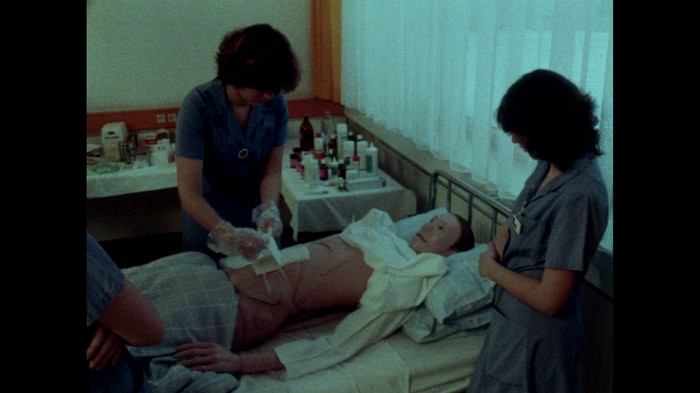
Occupation: Carer. Nurses in Vienna, AT 1982, Filmstill
© media wien
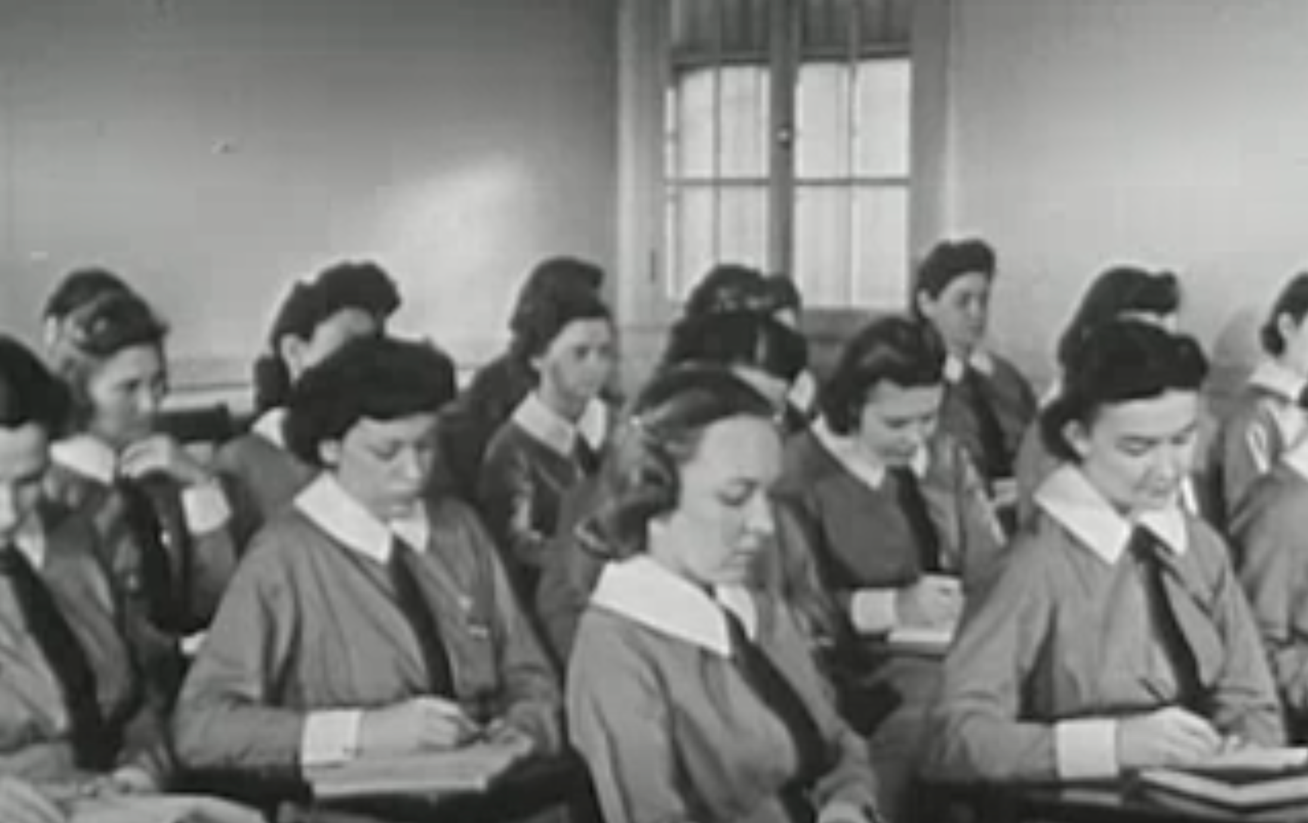
Nursing, USA 1942, Filmstill
© Vocational Guidance Film, Inc.
Between enlightenment and ‘plugging’. A history of vocational guidance films on nursing
At a film evening on nursing education at the Vienna Film Academy last November, three vocational guidance films from the 1940s, 1980s and 2020s, among others, were jointly scrutinized by nursing professionals, filmmakers and both scholars in film studies and vocational science. Revealing stages of progress and regression as well as fundamental questions concerning vocational training, film and fiction. What does a contemporary nursing education consist of? How much reality is there in vocational guidance films?
Vocational Guidance is a film genre of its own, which in contrast to advertising, has no overt commercial intentions. It does not promote any employer or an educational provider but tries to convey a neutral image of an occupation and enlightens us on the basis of work tasks, qualifications, job requirements, training and social dimensions. In this respect, little has changed in the aim, but pretty much everything has changed in the way it is produced and consumed.
“Faster, shorter, more colorful” is how one could summarize the historic development of vocational guidance films. Axel Stummer’s film “Beruf helfen” (occupation: carer) (AT 1982) was created when it was still customary to last 30min so that there would be enough time for questions from students within the one-hour lesson; presently vocational guidance films have to stand up to competition from three-minute TikTok videos (see, for example, “Gesundheits- und Krankenpflege” (2019) by stay tuned from the Austrian Public Employment Service series of career videos).
In ‘Nursing’ (USA 1942), the didactic setting from the black-and-white era of film saw an authoritative male narrator with a lecturing voice off-screen explaining the profession. In contrast, today’s vocational guidance films exclusively feature qualified and prospective practitioners speaking for themselves. In ‘Beruf helfen’ from the 1980s, both elements are still used, as well as a mix of actors and active nurses. In addition, according to Stummer, there was a requirement to give the film the quality of a feature film. Consequently, there is also a plot of sorts, and even the leisure time behavior of nursing staff and their residence is given an unbelievable amount of space.
Largely unthinkable today, this aspect thus promoted an important additional finding: we get an insight, into the milieu and social environment of caregivers. As a highlight, director Stummer also built in a few suspense elements à la ‘The Kingdom’ (1994)*, thus strengthening the feature film character. “Everything was predetermined down to the smallest detail and I wasn’t allowed to change anything in the script, but I took this artistic license,” Stummer remarks mischievously during the film discussion. Stummer was still a student at the Film Academy at the time, and was clearly delighted to see the film again after 40 years.
But how much fiction is there in vocational guidance films, then and now? In current films from the Austrian PES on nursing, for instance, more male nurses than female nurses have their say, surprisingly. The attempt to attract men to the profession is obvious and legitimate, however, the fact that the proportion of men in nursing in Austria is below 20 percent is conspicuously concealed. In this respect, people used to be more accurate: the footage from ‘Nursing’ (1942) shows only women (note: the training was segregated according to gender). Thus, a certain advertising character cannot be denied in today’s vocational guidance films. Today, however, the conscious recruitment of nurses obviously has to plug the career in an even “shorter, faster, more colorful” manner (cf. the 2min campaign film of the Hamburg clinics).
In the past, the idea was invariably: the longer the more convincing. The National Health Service (NHS) in Great Britain recently launched a project on the occasion of its 70th anniversary in which, together with the British Film Institute (BFI), around 100 films on health care (feature films, documentaries, animated films, etc.) were compiled. Among them was one of the most ambitious recruitment films ever made, tellingly titled “Life in Her Hands” from 1951, a 60min B‑movie sponsored by the British Ministry of Labour with the aim of attracting women, obviously, to the nursing profession, where the film’s success was measured by recruitment numbers. The number of applications after the screenings, which were mostly held in town halls, was meticulously documented. Reportedly, the percentage of new female nurses increased by 27% within five years.
Whether film has an active impact on nursing recruitment today remains largely an open question. According to a recent U.S. market research survey, the hospital series ‘Grey’s Anatomy’ and ‘Emergency Room’ are supposedly among the five series with the greatest demonstrable influence on career choice. The issue with this is that an overwhelming proportion of those surveyed saw their profession as misrepresented and actually much more demanding.
To what extent the publicly financed feature film “Life in Her Hands” truly reflects reality will have to be decided by medical history researchers. What documentary film as genre is capable of achieving in this regard, you can enlighten yourself about in our next article.
References:
Allan, H., & Evans, K. (2021). Theorising in everyday nursing practice: a critical analysis. Sage.
Hallam, J. (2012). Nursing the image: media, culture and professional identity. Routledge.
Zenbusiness (2020). Influence of Media on Careers. Blogbeitrag.
Russell, (2018) The NHS on film,
Blogbeitrag. https://www.bfi.org.uk/features/nhs-national-health-service-film
* The Kingdom (1994) is a legendary miniseries by director Lars von Trier for Danish television, set almost exclusively in a Copenhagen hospital where the staff is confronted with supernatural phenomena.
** A project from which other countries can take a leaf out of their book. For the coming year and the 75th anniversary of its founding, the NHS is going one step further, inviting applications for funding for three short films dealing with NHS issues.
'Das ist Pflege' [This is Care], DE 2019, 2min, Hamburg Clinics
Nursing, USA 1942, 11min, Vocational Guidance Film, Inc.
Diploma Nursing, AT 2019, 14min, a vocational gudiance film by stay tuned on behalf of AMS and WIFI.

Occupation: Carer. Nurses in Vienna, AT 1982, 25 min, Director: Axel Stummer
© Trailer available at Filmarchiv media wien: https://mediawien-film.at/film/441/

Occupation: Carer. Nurses in Vienna, AT 1982, Filmstill
© media wien

Nursing, USA 1942, Filmstill
© Vocational Guidance Film, Inc.

Capturing ‘Each and Every Moment” of nurses in training
A W-o-W film evening contrasted vocational guidance films with "Each and Every Moment", a heartfelt documentary by Nicolas Philibert on training of nurses at the La Croix Saint-Simon hospital in the suburbs of Paris.
Hikikomori — depression as rebellion?
What can Europe learn from Japan's experience dealing with NEET youth, those who are neither in employment nor training?
W‑o-W Filmscreening #1: Nursing shortage in the spotlight
Work-o-Witch invites to its first film screening to discuss the role of film in the professional training of nursing staff and as a medium for addressing skills shortages, on 10 November 2022, at the Arthouse-Cinema of the University of Music and Performing Arts in Vienna.
Educating Frank
"Educating Rita" (1983) is the undisputed favorite cinematic example of adult education research: rarely has social mobility through education been told in such a multifaceted and entertaining way. In the era of online teaching, it's worth revisiting the film with a focus on the second lead role, alongside Rita, the lecturer Frank, aka Michael Caine.
Trainspotters’ job interviews
Job interviews in feature films are rare. Nevertheless, film history has some special treats in store. From the point of view of public employment services, the interview scene from Trainspotting (1996) by Danny Boyle cannot be surpassed.
What‘s Work?
What’s labour? What’s employment? And how have they changed over the centuries? Leading scholars from Europe, the US, China and Africa reflect on these and related questions in a six-part documentary by Gérard Mordillat and Bertrand Rothé, which makes for an outstanding podcast.

About this blog
By selecting a film or an image, this blog literally illustrates the vast sphere of work, employment & education in an open collection of academic, artistic and also anecdotal findings.
About us
Konrad Wakolbinger makes documentary films about work and life. Jörg Markowitsch does research on education and work. They are both based in Vienna. Information on guest authors can be found in their corresponding articles.
More about
Interested in more? Find recommendations on relevant festivals, film collections and literature here.
About this blog
With picking a film or an image, this blog literally illustrates the vast sphere of work, employment & education in an open collection of academic, artistic and also anecdotal findings.
About us
Konrad Wakolbinger makes documentary films about work and life. Jörg Markowitsch does research on education and work. We both work in Vienna. Information on guest authors can be found in their respective articles.
More about
Interested in more? Find recommendations on relevant festivals, film collections and literature here.


